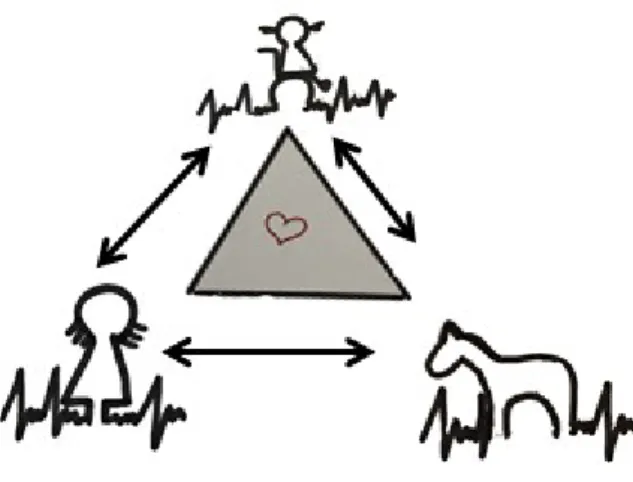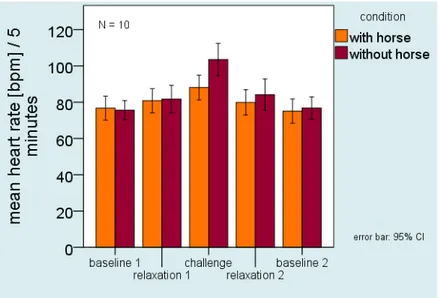Heart rate, heart rate variability and salivary cortisol as indicators of arousal and synchrony in clients with intellectual disability, horses and therapist during equine assisted interventions
Texto completo
Figure




Documento similar
Acute effect of endurance and high intensity Interval training (HIIT) on heart rate variability (HRV) alterations following orthostatic sit-up test (Research
(1) body awareness and body connection, (2) psychological measurements (satisfaction with life, stress, empathy, and well-being), (3) physiological (cortisol and heart
Table I shows an increase in respiratory rate and heart rate, to- gether with a significant decrease in the rest of time parameters during the attention demand task.. This
The hypotheses of this PhD thesis are that emotions induce noticeable changes in autonomic nervous system and that these changes can be capture from the analysis of
Despite these differences, HRV indices derived from the Apple Watch RR interval series were able to reflect changes induced by a mild mental stress, showing a significant decrease of
This framework will take into account all the former issues: correction by mean heart rate, time-frequency spectral analysis, redefinition of HF band based on respiratory frequency,
Objectives: The aim of this study was to investigate the acute effect of water immersion (22.6 °C) on heart rate, heart rate variability, body temperature, oxygen saturation,
This pilot study aimed to demonstrate the POWERbreathe ® inspiratory muscle training effects on maximum inspiratory pressure (PI max ), heart rate (HR) and HR variability, as well